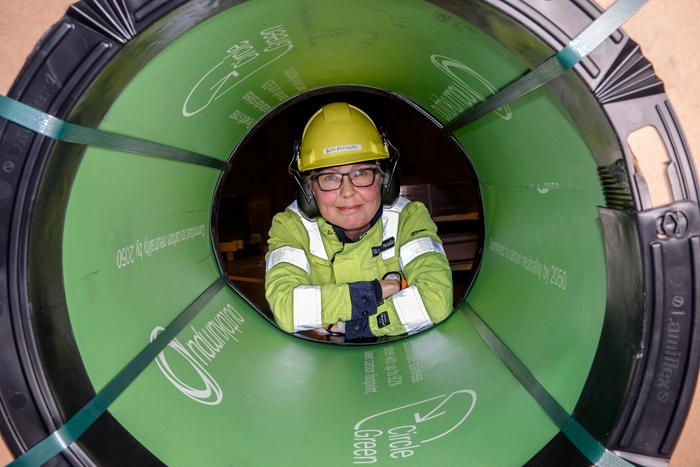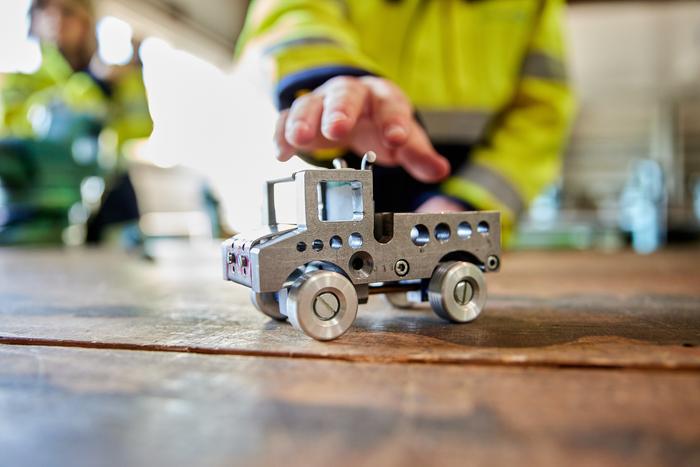Niklas Wass, Executive Vice President, Stainless Europe, Outokumpu
Someone wise once told me that if an idea doesn’t encounter any resistance, you can be sure it’s not anything groundbreaking. That’s how I knew that we needed to explore the full potential of our production technology.
We wanted to find out what was the minimum amount of emissions that could be associated with stainless steel production. But why bother, some asked, when the stainless steel we produce is already the industry’s most sustainable?
What we were actually attempted – was to find out what is the minimum CO2 emission that can be achieved with our current production technology, including Scope 1, 2 and 3. In other words, a sustainable method of stainless steel production combining numerous cutting-edge technologies into one process. This was definitely a groundbreaking thought, and any setbacks only made us hungrier to see how to make it a reality. In the end, we made it, but the development of Outokumpu Circle Green was just one of the things we achieved — and the positive results continue to manifest.
Cutting emissions – how far could we go?
To start with, it is important to know just a little bit about making stainless steel — namely, that it requires a substantial amount of energy, consumables and raw materials. Put together the raw materials are melted, hot-rolled and shaped into the various stainless steel materials we have around us in the society. Depending on the choices you make throughout the process, you will have different carbon emissions. This is an area where Outokumpu has already pioneered solutions, and our carbon footprint today is approximately 70% lower than the industry average.
The idea behind our industry-leading solution, Circle Green, was to take that much further — as far as it could possibly go. The production process we were able to create accelerates the usage of recycled raw materials, renewables and low-carbon energy, and a thoroughly reimagined value chain. In total, these changes have allowed us (so far) to eliminate 95% of scope 1 and 2 CO2 emissions, resulting in a production process that has as little as 8%* of the carbon footprint of conventionally produced stainless steel.
Producing all the world’s stainless steel with the same methods used for Circle Green would cut global carbon emissions by 250 million tons per year.

Lessons we learned that are changing our business
We set out to learn about producing stainless steel more sustainably. In reality, we learned a lot more. Here are three lessons that I believe have had the most profound impact on our organization:
Expertise can be blinding
The stainless steel industry relies heavily on experts, and although our business is founded on that expertise, creating Circle Green required a different skill set — a beginner’s mindset, assuming nothing and questioning everything. This is something that experts understandably often struggle with.
Embracing this way of thinking took time. During that journey, not only did we re-design our production process, but we also opened our minds and identified numerous opportunities to change our existing practices for the better. Acting on those opportunities meant that even in the highest levels of company leadership, expertise had to be recognized as a potential blind spot. Instead of making every choice based on what was certain, we gradually learned to make choices based also on what might be possible
The power of moments
I often wonder what my colleagues and Outokumpu’s many employees say to their friends or families about their jobs. The truth is, that stainless steel production is a wonderful world and very inspiring for those involved. However, maybe not as glamorous and inspiring for the family members and friends at the dinner table conversations. By creating Circle Green, we transcended that.
Today, anyone involved with Outokumpu knows that we are achieving something previously considered impossible — and that in some ways, no matter how big or small, they have contributed to that. Many people I talk to say they enjoy being part of the solution, and part of the story. In many of the stories I hear around the company, the own impact on CO₂ emissions is creating a new sense of purpose. Outokumpu’s purpose is to create a world that lasts forever – and now I get this re-told in other words across the company.
Just those singular moments — moments in which we realize or feel that we are a part of something significant — can be enough to change how we perceive our jobs, our company, and even ourselves. Throughout every arm of our organization, even reaching to our customers and partners, this feeling of pushing boundaries and redefining what is possible has altered the kinds of questions we ask, the conversations we have, and the goals we set. It’s an amazing example of how product innovation can lead to a breakthrough in the mindset of a 9,000-person company.
If you dream it, you can do it
This is not the kind of mindset that dominates in the world of stainless steel production. For a good reason, we don’t think of the industry as a creative or philosophical one. But as we’ve learned in the Circle Green journey, that might be holding us back.
In the beginning, we didn’t consider it possible to create what we have today. Instead, we had the idea to “aim for the stars in order to land on the moon.” As it turned out, reaching the stars was indeed possible. We want to continue building on that success, and we fully believe that challenges such as scaling up sustainable production, no matter how impossible they seem today, can be overcome.
Of course, realizing dreams does take action, and it can’t be done by going just halfway. You have to start with a mutual vision, and a clear objective stemming from it. On top of that, you need a timeline. Agreeing to work as long as it takes is great, but proof points are also necessary. Then, you must answer the questions of how to operationalize, scale, and apply your innovation going forward. Once again, failure is an inherent part of the process. And in the end, all the above can only be made possible with a truly passionate and committed team

Accepting failure leads to success, forming a perfect circle
The lessons above, from being willing to put our expert mind in the passenger seat to believe and go for the assumed impossible, hinge on an acceptance of failure. Too often, failure (or success) is seen as final — the period at the end of a sentence, rather than a comma between phrases. In business especially, many view failure as an undesirable outcome, when in fact it is learning and a key part of growth.
This is often embraced in the culture of small, agile startups, but is more and more forgotten as a business grows and establishes itself. In creating Circle Green, you might say we were re-awakened to this fundamental aspect of innovation and leadership. In the words of Albert Einstein, “Failure is simply success in progress.” Part of innovation is trusting that your team will find success in the struggle and solve the issues they find.
Altogether, the journey to Circle Green has been an incredible learning experience, and continues to be, as we pursue further development and scale. More than anything else, we are excited by what it means to our customers, partners, and the world at large: for the first time, we’re offering a choice.
*) Global average CO₂ emissions 6.1 tons of CO₂ per ton of stainless steel. Outokumpu Circle Green CO₂ emissions: up to 0.5 tons of CO₂ per ton of stainless steel.
Author: Niklas Wass, Executive Vice President, Stainless Europe, Outokumpu
